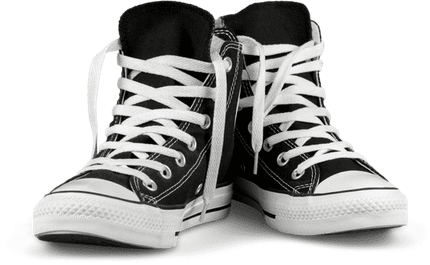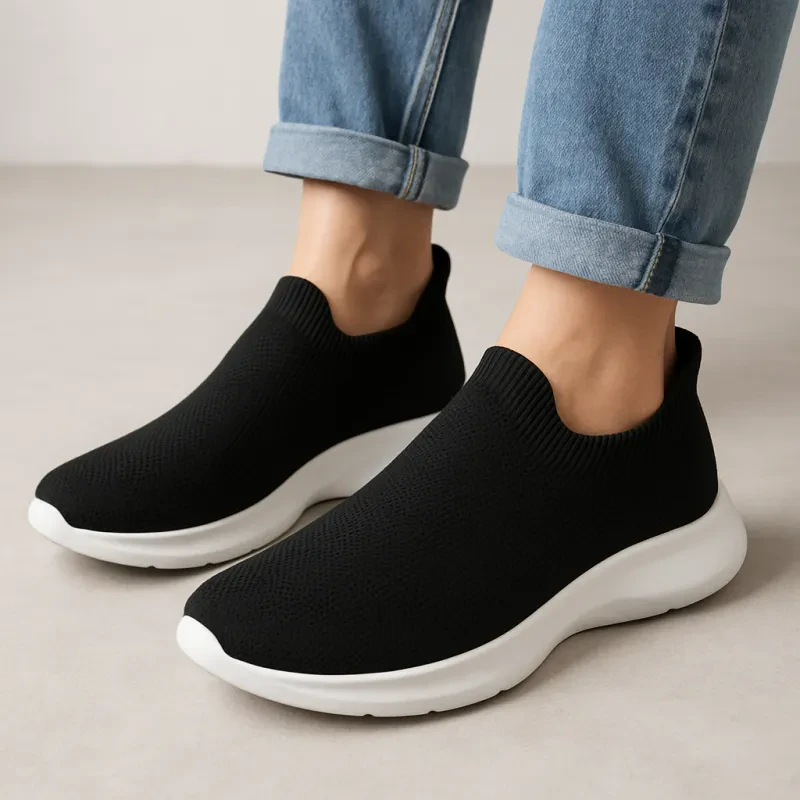Finding the right sneakers can be challenging for those with wide feet. Comfort is crucial, and choosing the right pair can make a huge difference in daily activities. Many brands now offer sneakers designed specifically to accommodate wider feet, ensuring both comfort and style.

It's important to know the key features that make sneakers suitable for wider feet. Options such as a wider toe box, cushioned support, and flexible materials can enhance the fit. With a little research, one can discover brands that excel in providing exceptionally comfortable shoes.
When it comes to purchasing, understanding the fit and size chart is essential. Knowing how to measure feet and which brands cater to wider options can help in making a well-informed choice.
Key Takeaways
- Finding comfort starts with choosing sneakers specifically made for wide feet.
- Key features include a wider toe box and good cushioning.
- Proper measurement and fit are vital for selecting the right sneaker.
Understanding Wide Feet

Knowing about wide feet can help in choosing the right sneakers. It is important to understand foot structure and what makes a foot wide.
The Basics of Foot Anatomy
Feet consist of bones, muscles, tendons, and ligaments. There are 26 bones in each foot, including the toes and arch area. The arch supports weight and helps with balance.
The foot is divided into three parts: the forefoot, midfoot, and hindfoot. The forefoot includes the toes and is crucial for stability. The midfoot provides support, while the hindfoot helps with movement.
Proper fit is essential for comfort. A well-fitted shoe helps prevent issues like blisters or bunions. Understanding foot anatomy aids in selecting shoes that match the foot's needs.
What Constitutes a Wide Foot?
A wide foot is typically defined by its measurement across the ball of the foot. Standard sizes are often labeled with letters like "D" for wide in men’s shoes and "EE" for women’s.
Factors contributing to wide feet may include genetics, age, and body weight. Some people may also have wider feet due to certain conditions such as plantar fasciitis or arthritis.
Knowing one’s foot width can help when buying shoes. Measuring the foot properly ensures the right fit. Some brands offer specific wide sizes, which can greatly improve comfort.
Key Features to Look for in Sneakers

Choosing the right sneakers for wide feet involves several important features. Understanding these key elements can help find the best fit for extra comfort and support.
Wide Toe Box
A wide-toe box is essential for comfort in sneakers designed for wide feet. This feature gives the toes plenty of room to spread out without feeling cramped. A shoe with a narrow toe box can cause discomfort and even lead to foot problems over time.
When selecting sneakers, look for designs that specify a wide toe box. Try them on and ensure that there is enough space for the toes to move freely. Shoes that offer a square or rounded toe shape are often better choices.
Material Flexibility
Material flexibility plays a crucial role in comfort for wide feet. Sneakers made from flexible materials, such as mesh or knit, can easily stretch and adapt to the foot shape. This allows for a snug fit without tightness.
Breathable materials also keep feet cooler and dry during use. Look for sneakers with a soft upper that conforms to the foot. This adaptability helps in reducing blisters and pressure points, enhancing the overall wear experience.
Arch Support
Arch support is another important feature to consider. Proper arch support helps maintain foot alignment and provides stability. This feature is especially important for people with flat feet or high arches.
Sneakers with built-in arch support or removable insoles allow for customization. Individuals can add orthotic insoles if needed. A supportive sneaker reduces fatigue during long wear and can prevent soreness in the feet and legs.
Top Sneaker Brands for Wide Feet

Finding the right sneakers for wide feet can make a big difference in comfort. Several brands specialize in accommodating wider foot sizes, providing options for style and function.
Leading Brands Overview
Several leading sneaker brands offer great choices for those with wide feet.
-
New Balance: Known for excellent support, New Balance provides various styles in wide widths. Their Fit with the brand is often praised for comfort during long wear.
-
Asics: This brand focuses on running shoes but also offers wider options. Asics sneakers have good arch support, making them ideal for active use.
-
Saucony: Saucony offers a range of performance shoes designed for wider feet. Their sneakers often feature cushioning and stability, suitable for both casual and sports activities.
-
Brooks: Popular among runners, Brooks includes wide variations in their models. They are known for cushioning and support, keeping feet comfortable during runs.
-
Nike: While Nike is traditionally known for narrow designs, some styles come in wider widths. This brand blends fashion with function, appealing to a variety of customers.
Brand Comparison
When comparing these brands, some key factors stand out.
-
Comfort: New Balance and Brooks are often highlighted for their comfort and support.
-
Style Options: Nike generally offers a wider variety of trendy designs, appealing to fashion-conscious shoppers.
-
Performance Features: Asics and Saucony prioritize performance with features like enhanced cushioning and breathable materials.
-
Size Range: New Balance and Brooks frequently provide the largest selection of wide sizes.
Choosing the right brand depends on specific needs, such as style preference or activity level. Each brand has its strengths to cater to the wide-footed consumer.
How to Get the Right Fit

Finding the right fit is essential for comfort, especially for those with wide feet. Proper measurements and understanding sizing can make a big difference in choosing the right sneakers.
Measuring Your Feet
Measuring feet correctly is the first step to getting the right fit. Start by standing on a piece of paper. Trace around each foot while keeping the pencil upright. Measure the length from the heel to the longest toe.
Next, measure the width at the widest part of the foot. It's best to do this at the end of the day when feet are usually wider. Both measurements will help determine the correct size. If one foot is larger, choose the size that fits the bigger foot.
Generally, sizing for wide feet is labeled "W" or "EE." Always check the shoe brand for specific guidelines, as sizes can differ.
Understanding Sizing Charts
Sizing charts provide important information for finding the right fit. Each brand has its own size chart, which lists foot lengths and corresponding sizes.
A common way to read these charts is by comparing the foot length to the listed sizes in inches or centimeters. When shopping, it’s helpful to have these measurements on hand to find a perfect fit.
Some brands even offer specific charts for wide feet. It's crucial to pay attention to these details. Knowing the exact size needed helps avoid the hassle of returns. Always double-check size charts, especially when trying a new brand.
Maintenance Tips for Sneakers
Taking care of sneakers is essential for keeping them in good shape and extending their life. Proper cleaning and storage can help maintain comfort and appearance, especially for those with wide feet.
Proper Cleaning Techniques
To keep sneakers clean, start by removing laces and insoles. This makes it easier to clean all parts of the shoe. Use a soft brush or cloth to remove dirt. For tough stains, a mixture of water and mild detergent works well.
Avoid using harsh chemicals as they can damage materials. For mesh and fabric sneakers, spot cleaning is recommended. Use a damp cloth with soap and gently scrub the stained area.
For leather sneakers, wipe with a damp cloth and let them dry naturally. Never put sneakers in the washing machine, as this can ruin their shape. After cleaning, let them air dry away from direct heat.
Sneaker Storage Advice
Proper storage helps prevent wear and tear. For best results, keep sneakers in a cool, dry place. Avoid areas with high humidity, as moisture can cause mold.
Using a shoe box or a dedicated sneaker organizer can protect them from dust and scratches. When storing, lace them up to maintain their shape.
If not worn for a while, consider using cedar shoe trees to help absorb moisture and keep the form. Rotate between pairs when possible to give each pair a break. This strategy reduces daily wear and extends the life of each sneaker.
Frequently Asked Questions
Finding the right sneakers for wide feet involves understanding brands, fit, features, and support. This section addresses common questions to help narrow down choices for comfort and performance.
What are the best sneaker brands for wide feet?
Some sneaker brands are well-known for making shoes that fit wider feet. Brands like New Balance, Asics, Brooks, and Hoka are often recommended for their wider options and comfortable designs.
How can I tell if a sneaker will fit my wide feet comfortably?
To determine if a sneaker fits well, look for specific sizing options like "wide" or "extra wide." Trying on shoes and checking for room in the toe box and midfoot areas can also help ensure a good fit.
Are there specific features to look for in sneakers designed for wide feet?
When choosing sneakers for wide feet, it's important to look for wider toe boxes and flexible materials. Shoes with adjustable laces or straps can also provide a better fit.
Can I find athletic sneakers suitable for wide feet and high-impact activities?
Yes, there are many athletic sneakers designed for wide feet that are suitable for high-impact activities. Brands offer models with excellent cushioning and support for running, jumping, and other sports.
How do I ensure the best fit when ordering sneakers for wide feet online?
When ordering online, check the sizing chart carefully. Reading customer reviews about fit can also provide useful insights, especially from others with wide feet.
Are there sneakers for wide feet that also offer arch support?
Many sneakers for wide feet include arch support. Brands like Saucony and Brooks have several models designed specifically for arch support while accommodating wider feet.



